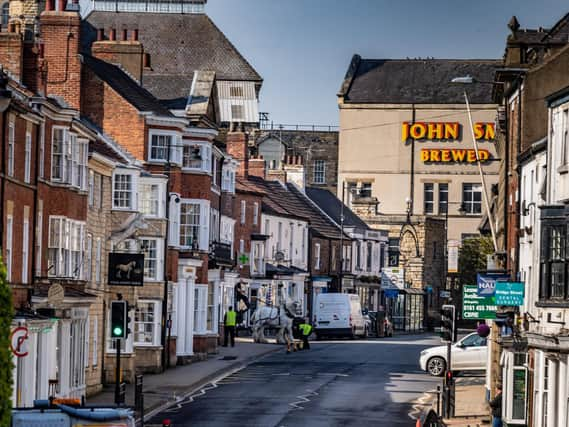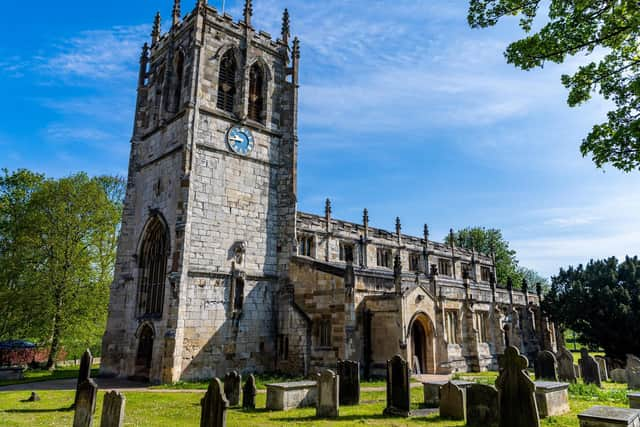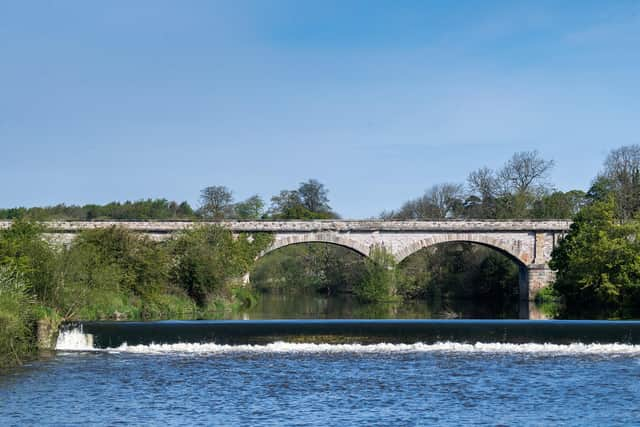Romans left their mark on Tadcaster - home to Yorkshire's longest-surviving brewery in Sam Smith's


If there’s one word which is synonymous with Tadcaster it must be ‘brewing’. The town has a trio of breweries, two of which are owned by international conglomerates, and the third is a proudly independent business that not only brews beers and lagers, but which also owns a large chain of pubs. Samuel Smith’s Old Brewery also happens to be the longest-surviving brewery in Yorkshire.
They all, of course, contribute hugely to the local economy, but why are they based in Tadcaster? Well, it has little to do with the River Wharfe, which flows through this historic town before joining the mighty Ouse some ten miles away, and everything to do with the quality of the local water supply, which bubbles upwards after filtering through the limestone on which the town is built.
Advertisement
Hide AdAdvertisement
Hide AdThe springs are known as “popple-wells”, and over the centuries they have been the source of several brewing and ale-related fortunes. The first records showing that they were in existence come from the reign of Edward III, for there are tax records telling us how much they paid.


Limestone has played a major part in Tadcaster’s history for thousands of years, and when the Romans established a base here they even named it Calcaria – the word for “lime” in Latin.
The stone quarried from around the town was used to build robust walls in York, and later provided much of the fabric of the great Minster, and other important buildings.
The stone was also used in the construction of Tadcaster’s beautiful St Mary’s church. The building we see today mostly dates from between 1380 and 1480, and there is little left of the previous church that opened for prayer in around 1150. That earlier building fell victim to marauding Scots on one of their many incursions south. St Mary’s sits quietly in a picturesque setting next to the Wharfe, but that was, sadly, often its undoing, for there were frequent floods that caused considerable damage. It went on suffering until some Victorian engineers and entrepreneurs suggested a novel solution in 1874. Why not, they suggested, raise it above the floodwaters? And so in the mid-1870s it was dismantled and then reconstructed on foundations which were five feet higher than the original. It all cost around £8,500, and every penny came from an admiring public.
Advertisement
Hide AdAdvertisement
Hide AdThe development of another local landmark, though, was more controversial. In the 1840s, the York and North Midland Railway decided to construct a new line from York to Leeds. It decided to build an impressive 11-arch viaduct over the river to carry the tracks, and it was completed by 1849. But there were rivals on the rails, and investors became a lot more wary about where they put their money. The collapse in financial confidence meant that the viaduct never carried passengers over the river, and it was only in 1883 that this stately and graceful Grade II listed piece of architecture was used by locomotives – as a siding line for a local mill. And, in 1959, that closed as well.


These days, it is the subject of countless photographs and is one of the most popular white elephants in Yorkshire.
Far more practical is Tadcaster’s other bridge, which is over 300 years old. It is fair to say that everyone took it very much for granted until December 29, 2015. On that evening, after days of torrential rain and severe flooding, the stonework gave way, and much of the central section collapsed, fracturing a gas main as it went. Tadcaster found itself cut in two. It was Grade II listed, and so Historic England had to offer an assessment about its restoration. It wasn’t until early February 2017 that the town was properly ‘reunited’.
But let us dart back to our old friends, the Romans. When they departed, Tadcaster (or Tada, as it was known to the Anglo-Saxons) meandered gently on until 1066, when it attained national importance as the place where King Harold pulled together his army before marching off to meet the invading army led by Harald Hardrada at the battle of Stamford Bridge.
Advertisement
Hide AdAdvertisement
Hide AdVictorious, Harold then heard of an invasion in the south and hurried to meet his nemesis at Hastings, in the form of William of Normandy and his men. (The rest, as they say, is history).
It wasn’t long before William decided that he wanted to know what his new kingdom was worth and he would read, in the Domesday Book, of “Tatecastre” and the town’s two manors, a pair of mills, and seven ploughs, as well as several productive acres of meadowland. In all, it was all worth about 100 shillings, which was a tidy sum back then. One of his northern supporters, William de Percy, was entrusted with building a castle, though it never played a major part in any wars, and the main benefit that the town derived from it was that much of the stone from its walls (some of which had been used in the earlier Roman fortifications) was used to build Tadcaster’s shops and houses.
That stone was certainly used in the foundations of the town’s oldest building still in daily use, the lovely 15th century Ark. Its name derives from the fact that it has a pair of sculptured heads on the frontage. One is Noah, and it is presumed that the other is his wife – strangely, she is not named although some Hebrew scholars believe she may have been called Naamah.
And once again, Tadcastrians have demonstrated their ingenuity over the years by using it at various times as a pub, post office, museum, butcher’s shop and – today – town council offices. It was also once licensed for Presbyterian meetings, and legend has it that the Pilgrim Fathers prayed here before setting sail.
Advertisement
Hide AdAdvertisement
Hide AdEducation has always played a big role in Tadcaster, and today’s Grammar School (now just outside the town centre, and with Academy status) has been much praised. It was founded in 1557 by Owen Oglethorpe, then Bishop of Carlisle, who was born in the town. And in the Victorian era, the Wesleyan congregation provided rooms for the schooling of 300 youngsters.
And how many other similar sized communities can claim to have a Site of Special Scientific Interest? Tadcaster Mere was formed some 10,000 years ago, when this part of Yorkshire was at the southernmost tip of glaciation.
It’s yet another reminder of the town’s rich heritage and indeed Yorkshire’s. And if you want to celebrate with a pint, you will have certainly come to the right place.